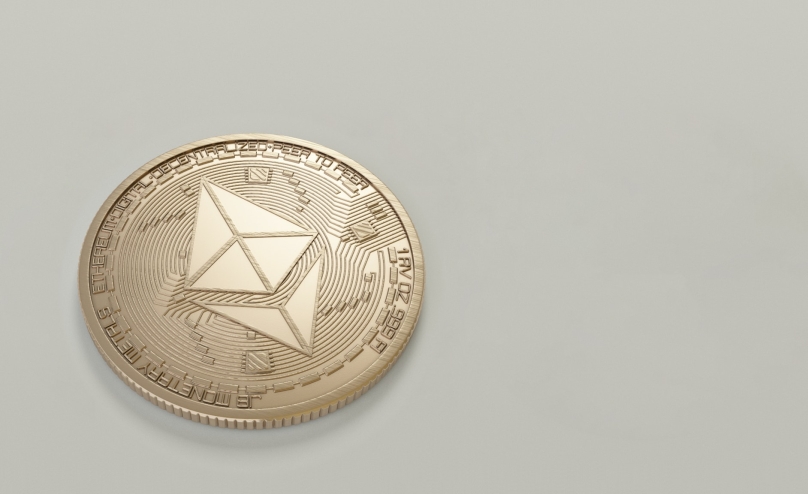Introduction
Amid the hype surrounding the upcoming Ethereum Merge – the merger of Ethereum – and its potential forks, crypto enthusiasts are missing the environmental issue.
Experts say that due to the merger, carbon dioxide emissions will be sharply reduced, and the transition to the Proof-of-Stake (PoS) protocol will change the functions or completely exclude miners from the blockchain ecosystem. But most importantly, will reduce Ethereum energy consumption by 99.9%, and this topic is becoming the main topic on the agenda for many countries facing the energy crisis and climate change.
What is Ethereum
Most blockchains run on a Proof-of-Work (PoW) or PoS algorithm, which relies on users or miners to create, confirm, and secure transactions. Blockchains based on the PoW algorithm – bitcoin and Ethereum – require miners to solve PoW puzzles and receive tokens if the solution is confirmed by other miners. PoS requires you to hold tokens as collateral before they are selected for the approval of transaction blocks and subsequent receipt of tokens.
How PoS Helps the Environment
There is a huge difference between the energy consumption of Ethereum required to process PoW and PoS transactions. Bitcoin consumes 130 TWh of energy per year, which is equivalent to the consumption of a small European country per year. Ether consumes much less – about 26 TWh, but this still corresponds to the annual energy consumption of Ecuador with a population of 17 million people.
For comparison, the Tezos blockchain based on the PoS algorithm consumes only about 60 MWh per year. The noticeable difference is less than the indicators of bitcoin and ether by more than 2 million times.
If the merger is successful, it will push other blockchains to switch to PoS similarly. In addition to the benefits for the planet, MERJ will open the cryptocurrency market to new categories of investors who were confused by environmental issues related to digital assets, as well as the complexity of mining.
The growing interest in eco-friendly investment
A recent survey by Betterment, a digital investment advisory company, showed that 90% of cryptocurrency investors consider it important to move the blockchain towards environmental friendliness. In a study involving 1,000 American investors, it turned out that ESG assets (environmental - ecology, social – social development, governance – corporate governance) are chosen by younger age groups: 54% of respondents are representatives of generation Z and millennials, compared with 25% of representatives of generation X and 42% of baby boomers. This not only reflects the youth demographics of crypto investors but also suggests that ESG will become an important criterion for investments in the future.
Sustainable investment indicators are not new to the industry: last year, American sustainable investment funds attracted almost $70 billion, which is 35% more than in 2020.
The cryptocurrency crowdfunding platform Earthfund has noted a "big shift" in the crypto industry. Ordinary and institutional investors are looking toward a thorough study of tokens and projects and their compliance with ESG recommendations, primarily due to the negative public response around bitcoin's carbon footprint. Earthfund co-founder and advisor Adam Boalt told Forbes: "We think that after the news that the Ethereum merger will reduce energy consumption by 99.5%, a new wave of crypto investors will appear who will look beyond the dominance of bitcoin."
Green payment method
Cryptocurrencies make the usual payments fast and cheap, and the transition to a new protocol will make transactions eco-friendly. An IMF study comparing the energy consumption of digital currencies and existing payment systems showed that the energy consumption of cryptocurrencies is significantly lower than that of credit cards. This is due to the replacement of the PoW mechanism with other consensus mechanisms, as well as the use of systems with access rights.
Central banks in many countries are considering launching their digital currencies in the form of CBDC. Such projects will be based on energy-efficient distributed registry systems, to which only authorized institutions will connect, for example, commercial banks, can confirm authenticity without PoW. This means that CBDCs can potentially reduce the energy consumption of digital payments and become even more energy efficient than credit cards, which are the most common payment methods.
The Ethereum merger has not yet taken place, but attention to the environmental consequences of this step cannot be ignored. In the long run, this will help raise awareness and start discussions about how cryptocurrencies will support sustainable development, as more investors begin to pay special attention to ESG. In terms of the potential impact on the future sustainability of cryptocurrencies, exactly how the merger will begin and what results in it will bring deserves our close attention.
Opponents of The Merge
Some market participants are skeptical about the upcoming event and express their concerns.
Analysts admit that merge may negatively affect tokens based on the Ethereum network. In addition, network downtime caused by the fact that not all protocols will switch from Proof-of-Work to Proof-of-Stake is not excluded.
And, of course, another huge layer of dissatisfaction with the Ethereum update is the miners of the network, because they will be completely excluded from the ether system. If the miners continue their work, there are chances to see ETHPoW (another ETH hard fork).
It is not yet known how successful this will be, since top resources using ETH declare their readiness to support the official ETH strategy. The largest NFT marketplace OpenSea has already announced that it will only support the updated ETH on the PoS algorithm.
It will be interesting to follow the potential emergence and development of ETHPoW.
The effect on the value of Ethereum?
The process of switching to PoS is accompanied and will be accompanied by increased volatility of the ETH coin.
Firstly, at the very moment of the network's transition to PoS, drawdowns of the exchange rate are possible - both due to probable network downtime (which we wrote about above) and due to restrictions on performing operations during the transition. For example, Binance warned that the input and output of ETH and WETH will be suspended on September 6 at 5:00 Moscow time (Bellatrix consensus level update time) and on September 15 at approximately 3 am (Paris level update). The restrictions will remain in effect until the updates are completed.
Moreover, the Ethereum rate may go lower if the merger is accompanied by network malfunctions and error detection.
On the other hand, against the background of news about the merger and the transition to an artificial deflationary model (commission burning) the cost of ETH is growing noticeably. So, on September 5, the day before the first update, the ETH/USDT exchange rate increased from $1557 to $1687 (+8.3%).
After switching to PoS, mining rewards will no longer be issued. As a result, there will be a reduction in the annual issue of ETH by about 90%. If the law of supply and demand works, it can also lead to an increase in the price of the coin.
In addition to all that has been said, the arguments in favor of a long-term increase in the value of ETH are based on the fact that the interest rate for the Ethereum stake will rise to 6-7%, which will cause an increase in demand for the coin.
Vitalij Buterin about the Proof-of-Stake model
The creator of Ethereum is confident that the PoS mechanism is much more efficient and safer than its previous PoW model. Due to the rather high threshold of entry into the network (32 ETH), some attackers simply will not be able to enter it, because for this you need to pay a considerable amount (~ $ 55,000). And without logging into the network and attacking it will be more difficult.
Moreover, Vitalij believes that in the long term, Proof-of-Work may even become a threat to Bitcoin. When the full issue of Bitcoin (21,000,000 coins) is made, and mining stops, the BTC network may lose the security that miners previously guaranteed.
In conclusion, we would like to say that The Merge is an incredibly important event both for the further development of Ethereum and for the entire crypto community. We will continue to monitor the update process and wait for its results. Don’t forget to check out Mobile Reality Blog for more articles about blockchain.
Web3 and Blockchain Development Insights
As the blockchain landscape continues to grow, it's clear that the value of NFTs and Web3 technology extends far beyond mere monetary worth. At Mobile Reality, we're at the forefront of exploring the potential of these technologies. We invite you to peruse our detailed articles that offer rich insights into the world of Web3 and blockchain software development:
- The true value of NFT is not only about money
- What are the benefits you can get by buying an NFT?
- Guide to NFTs: When and how to invest in NFTs
- Guide to NFTs: When to mint own collection?
- Web3 & NFT roller-coaster and analysis
- Top 10 Web3 Blockchain Real Estate Companies
- Blockchain Web3 Music Companies you Should Know in 2025
- Leveraging Blockchain for Fintech: A Look Ahead to 2025
- Top Blockchain Conferences That You Cannot Miss in 2025
- Maximize Your NFT Marketplace Development in 2025
- DePIN: Power of Blockchain for Infrastructure Networks
These resources are curated to broaden your understanding and inform your decisions in Web3 and blockchain. By the way, Mobile Reality has been recognized as one of the top blockchain development companies by Vendorland. Contact our expert sales team for potential collaborations if you consider venturing into NFTs, blockchain, or web3 development. For those aspiring to be part of our innovative team, we encourage you to explore career opportunities on our careers page. Join us as we delve into the transformative world of blockchain technology!





